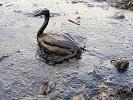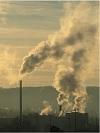Environmental studies is a multi-dimensional subject which analyzes the ecological, economic and social facets present in the environment and their influence upon the natural world. This field of study is very interdisciplinary and often overlaps with other scientific disciplines such as biology, ecology and geography.
A major focus in the field of environmental studies is on the local and global environmental problems which are plaguing the Earth today. Environmental degradation is a paramount issue in the twenty-first century and the need for mitigation techniques is critical. Human civilization has and continues to have an enormous impact on the environment, and thus, subject areas such as environmental policy are important for trying to regulate human behaviour.
Research is another large component of environmental studies and involves the participation of individuals from an array of disciplines. This includes ecologists, sociologists and mathematicians to name a few examples. Research is critical to analyzing the influence of anthropogenic factors on the environment so that human-induced degradation can be prevented. Natural processes cannot be eliminated and thus, focusing on how to reduce our human footprint is imperative.
Environmental studies includes a multitude of subjects such as sustainability, conservation, restoration and environmental toxicology, which all aim to improve and protect the environment. In an ideal world, the living and non-living worlds would be in harmony with one another. Unfortunately, this is not the case today. However, hopefully through further research within this field, this environmental harmony will one day be achieved.
Title Image Credit: Pixabay. (2014). Globe, Leaves, Green, Environment, Nature. Retrieved from http://pixabay.com/p-109275/
© BrainMass Inc. brainmass.com June 30, 2024, 9:27 am ad1c9bdddf










